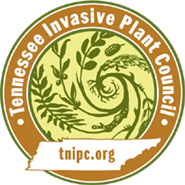Alternanthera philoxeroides (Mart.) Griseb.
Alternanthera philoxeroides (Mart.) Griseb.Alligatorweed
| Threat Level | Category |
|---|---|
| Established | Forb/Herb |

Description
Height
Alligatorweed is an ascending or reclining, herbaceous, aquatic/terrestrial perennial up to 40 inches (1 m) tall, spreading by horizontal stolons (stems).Stem
Succulent stems may be horizontal and extend up to 30 feet (10 m). Fibrous roots often develop at the nodes and root into the soil or hang free in water. Stems often develop into floating mats in shallow water. Stems in aquatic habitats may be hollow.Leaves
Leaves are sessile, simple, and opposite on the stem. Leaf margins are entire to obscurely toothed.Flowers
Flowers are white and clustered into clover-like heads.Fruit
The presence of seeds have not been observed in herbarium specimens leading authorities to assume vegetative reproduction through fragmentation.Images
Photo: Robert H. Mohlenbrock, USDA NRCS PLANTS Database, Bugwood.orgMore images of Alternanthera philoxeroides
Life History
lligatorweed is a perennial in the Amaranthaceae Family. It has hollow stems that bouy the plant allowing it to float on the surface of various waterways forming nearly impenetrable mats. It can adapt to drying conditions by rooting terrestrially forming smaller, tougher leaves and stems. The plant spreads through the rooting of broken stems. Thus far only vegetative growth has been noted in the United States, though viable seeds have been found here. It is very disruptive to many economic uses of water.Habitat
Alligatorweed (as the name suggests) is a plant of aquatic or shoreline habitats. It roots initially on banks in wet soil or shallow water and expands out on the water’s surface.Origin and Distribution
Alligatorweed is native to South America, but has become established across the southeastern U.S. along the coastal plain from Virginia south to Florida and west to Texas. It has been found throughout the Tennessee River Valley with scattered introductions elsewhere. Other states where it is considered a noxious weed: AL, AZ, AR, CA, FL, SC, TX.Other Sources: Wiki Bugwood
Management Recommendations
3. Mechanical ControlMechanical removal can be expensive and laborious. Large mats may be harvested from infestations at the risk of escaped fragments colonizing existing or new unoccupied habitats. Mechanical remove may likely exacerbate the invasive abilities of this plant.
Herbicidal Control
Alligatorweed is resistant to many common herbicides, although dicamba, triclopyr, and bentazone are used to control this plant. Refer to manufacturer’s label for specific information and restrictions regarding use.(source: http://www.eppo.org/QUARANTINE/AlertList/invasiveplants/Alternantheraphiloxeroides.htm)
Biological Control
The following biocontrol measures are under current study and have been included here to communicate future possible biocontrol measures.A species of gall gnat (cecidomyiid), Clinodiplosis alternantherae has been shown to form galls on branch tips, thus injury to the plant. This species of gall gnat could likely aid in the control of alligator weed (Gagne et al. 2004).
Two fungal species, Nimbya alternantherae and Cercospora alternantherae have pathogenic effects. Both have been damaging to Alligatorweed and appear to have biocontrol potential (Barreto and Torres 1999).
Three South American insect species have been tested for release in North America for biological control of A. philoxeroides. The flea beetle Agasicles hygophila strips the leaves from the stems. The moth Vogtia malloi bores inside the stems. Heavy damage by either species kills the stems destroying the vegetative mat. The thrip Amynothrips andersoni feeds on the young apical leaves leading to stunted growth in heavily damaged plants (Buckingham 1996).
A fungal disease caused by Fusarium sp. occurs occasionally on natural populations of alligator weed may be considered a possible candidate for biocontrol. The fungus controls alligator weed effectively under laboratory and greenhouse conditions, as well as in the field. Mass production of the fungal inoculum should be possible, but a system for mass production needs to be tested and established (Tan et al. 2002)
Barret, R. W., and A. N. L. Torres. 1999. Nimbya alternantherae and Cercospora alternantherae: Two new records of fungal pathogens on Alternanthera philoxeroides (alligatorweed) in Brazil. Australasian Plant Pathology. 28(2). 1999. 103-107.
Buckingham, G. R. 1996. Biological control of alligatorweed, Alternanthera philoxeroides, the world's first aquatic weed success story. Castanea. 61(3). 1996. 232-243.
Gagne, R. J., A. Sosa, and H. Cordo. 2004. A new neotropical species of Clinodiplosis (Diptera: Cecidomyiidae) injurious to alligatorweed, Alternanthera philoxeroides (Amaranthaceae). Proceedings of the Entomological Society of Washington. 106 (2). April 2004. 305-311.
Tan, W. Z., Q. J. Li, and L. Qing. 2002. Biological control of alligatorweed (Alternanthera philoxeroides) with a Fusarium sp. BioControl 47: 463-479, 2002.
